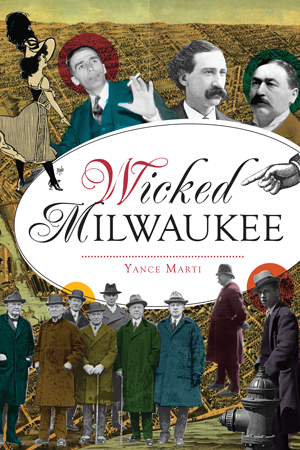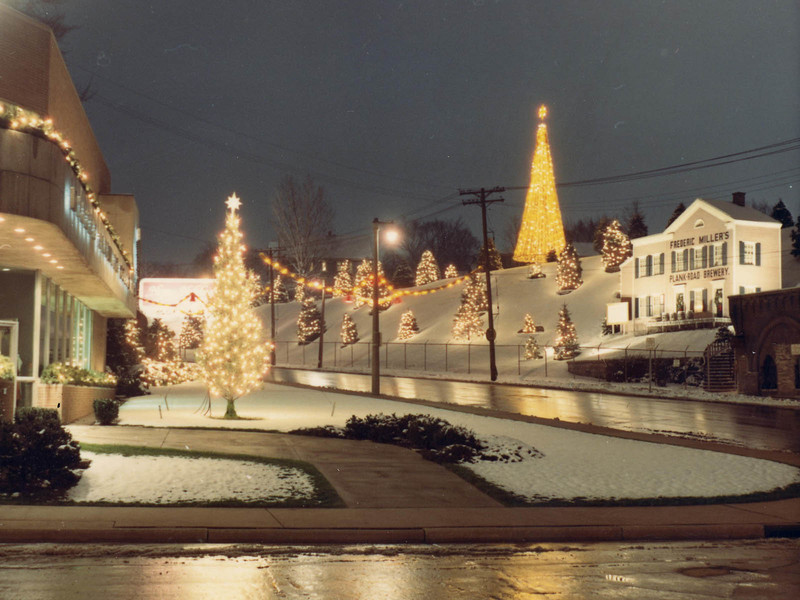Folks who are passionate about Milwaukee history know Yance Marti. In addition to Marti’s slim but amazing book, "Missing Milwaukee: The Lost Buildings of Milwaukee," published in 2012, the City of Milwaukee civil engineer also built and maintains the extremely informative OldMilwaukee.net web site.
Now, The History Press has published Marti’s "Wicked Milwaukee," a compendium of Cream City crime and degradation that will draw you in and keep you hooked until you finish all 118 pages.
This is a great time for Milwaukee history, as it seems more and more folks are writing articles, publishing books, sharing photos on social media and tracing the histories of their own houses, families and neighborhoods.
Marti’s book is the latest in a stream of books about Brew City that is flowing into area bookshops. You can hear him talk about the book on Monday, Nov. 5 at Historic Milwaukee Inc., 235 E. Michigan St.
In the meantime, we asked Yance about "Wicked Milwaukee" ...
Tell me about how you researched and came to write the book. Have you been collecting these kinds of stories for a while?
I have a long-term project of finding and compiling newspaper articles from the 19th century and early 20th century from now-defunct newspapers like the Milwaukee Free Press and Milwaukee Daily News.
These newspapers always had interesting stories and features. I tended to collect stories that were quirky, sensational, or told of earlier history. These laid the groundwork for the chapters of the "Wicked Milwaukee" book.
Once I had the ideas for the chapters it wasn't hard to find more related stories in the rolls of newspaper microfilm. Most of the information came from local newspapers although I rounded it out with tons of great information in some official proceedings and investigations.
Give us an example of some especially wicked Milwaukee, if you will.
There are ten chapters, each of which tell the story of different topics. The book opens with the history of the red light district. The other chapters tell of the great whiskey fraud, dangerous neighborhoods, opium dens, wine rooms, cross-dressers, the communists, speakeasies, policy gambling and ends with funny stories of the police court. People involved in all of these things were the wicked.
Was Milwaukee wickeder back then than it is now? Differently wicked?
It depends on who you talk to. Wickedness is always defined by a person's moral compass and varies depending in what direction your moral convictions are. I consider wickedness to be completely different from evil although I'm sure there are those that do not share that opinion.
Nineteenth century church crusaders had unrealistic ideas of how people should behave. Prohibitionists considered alcohol the root of all evil and stopped at nothing to get rid of it.
Nevermind the harsh economic consequences or the worse evils that human nature created to get around Prohibition. Many things in this book are not considered wicked by the average Milwaukeean today.
What do you think these stories from the city's past tell us about ourselves and our town?
The stories shed a light on the fact that the past wasn't as rosy as some people would like to think. People didn't have it easy unless they were in the upper echelons of society or had power.
The majority of people weren't allowed to deviate from very strict norms of behavior. There was more concern from the pulpit about wicked behavior than there was for families living in horrible conditions due to poverty.
Do you have a favorite story in the book that you can share in a nutshell?
They are all my favorites! I enjoyed reading the stories from the police court which became a popular beat for reporters to cover in the early 1900s. They would tell about all of the human pathos that paraded through the courts.
The following is one of those from the Milwaukee Daily News of 1914:
"Gustave Wiese, found guilty of carrying a concealed weapon on March 6, has been judged insane by Dr. A. F. Young, who was appointed to examine him. He has a mania for collecting revolvers. The man will be removed to the Milwaukee County Hospital for the Insane."
Born in Brooklyn, N.Y., where he lived until he was 17, Bobby received his BA-Mass Communications from UWM in 1989 and has lived in Walker's Point, Bay View, Enderis Park, South Milwaukee and on the East Side.
He has published three non-fiction books in Italy – including one about an event in Milwaukee history, which was published in the U.S. in autumn 2010. Four more books, all about Milwaukee, have been published by The History Press. A fifth collects Urban Spelunking articles about breweries and maltsters.
With his most recent band, The Yell Leaders, Bobby released four LPs and had a songs featured in episodes of TV's "Party of Five" and "Dawson's Creek," and films in Japan, South America and the U.S. The Yell Leaders were named the best unsigned band in their region by VH-1 as part of its Rock Across America 1998 Tour. Most recently, the band contributed tracks to a UK vinyl/CD tribute to the Redskins and collaborated on a track with Italian novelist Enrico Remmert.
He's produced three installments of the "OMCD" series of local music compilations for OnMilwaukee.com and in 2007 produced a CD of Italian music and poetry.
In 2005, he was awarded the City of Asti's (Italy) Journalism Prize for his work focusing on that area. He has also won awards from the Milwaukee Press Club.
He has been heard on 88Nine Radio Milwaukee talking about his "Urban Spelunking" series of stories, in that station's most popular podcast.





